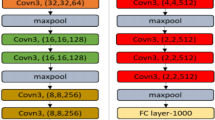Abstract
Convolutional neural networks is one of the most popular method in recent times to solve the computer vision and image processing applications. CNN has become more intensive as its computation increases day by day and it needs more dedicated hardware for an effective implementation. In recent times, graphics processing unit (GPU) and field programmable gate arrays (FPGA) are finding its high probability for the research in terms of low complexity execution and implementation of CNN. FPGA outperforms GPU in terms of its flexible architecture and high performance with less energy consumption. Hence FPGA finds more suitable for an effective implementation of CNN. How ever, optimization is required for an accelerator designs for CNN to accommodate more computations. One of the real dark side of the accelerator design is to perform the addition of intermediate results obtained during the convolution. Therefore multi operand adders are needed to employ for convolution operation but consumes the more area which in turn reduces the performance of the system. Hence the paper proposes the new cognitive Wallace compressor adder structures which is used for optimization in the adder layers of the convolutional neural networks (CNN). The proposed adders replaces the traditional binary tree adders for the CNN accelerator design. Also the paper provides the insight view of experimentation in ARTIX-7 EDGE FPGA and compared with the existing adders in which power consumption is reduced to 20–25% and area utilization has reduced to 30% respectively.












Similar content being viewed by others
Change history
04 July 2022
This article has been retracted. Please see the Retraction Notice for more detail: https://doi.org/10.1007/s12652-022-04263-4
References
Abdelouahab K (2016) Challenge of Multi-Operand Adders in CNNs on FPGAs: How not to solve it! https://www.researchgate.net/publication/326145280
Abdelouahab K, Pelcat M (2017) Tactics to directly map CNN graphs on embedded FPGAs. IEEE Embedded Syst Lett Inst Electr Electron Eng. https://doi.org/10.1109/LES.2017.2743247
Abdelouahab K, Pelcat M, Berry F (2018) The challenge of multi operand adders in CNNs on FPGAs. In: International conference on embedded computer systems: architectures, modeling, and simulation
Aysegul D, Jonghoon J, Vinayak G, Bharadwaj K, Alfredo C, Berin M, Eugenio C (2013) Accelerating deep neural networks on mobile processor with embedded programmable logic. In: NIPS 2013. IEEE
Cheng J, Wang P, Li G et al (2018) Recent advances in efficient computation of deep convolutional neural networks. Front Inf Technol Electron Eng 19(1):64–77
Farabet C, LeCun Y et al (2011) NeuFlow: a runtime reconfigurable dataflow processor for vision. In: Proceedings of the IEEE CVPRW conference
Farrukh FUD, Xie T, Zhang C, Wang Z (2019) A solution to optimize multi-operand adders in CNN architecture on FPGA. IEEE J VLSI 978-1-7281-0397-6/19/$31.00 ©2019 IEEE
Krizhevsky A, Sutskever I, Hinton GE (2012) ImageNet classification with deep convolutional neural networks. In: Advances in neural information processing systems-NIPS’12
Kumm M, Zipf P (2014) Efficient high speed compression trees on Xilinx FPGAs. Methoden und Beschreibungssprachen zur Modellierung und Verifikation von Schaltungen und Systemen (MBMV '14)
Li C, Zhou B (2020) Fast key-frame image retrieval of intelligent city security video based on deep feature coding in high concurrent network environment. J Ambient Intell Human Comput. https://doi.org/10.1007/s12652-020-01679-8
Nurvitadhi E, Subhaschandra S, Boudoukh G, Venkatesh G, Sim J, Marr D, Huang R, OngGeeHock J, Liew YT, Srivatsan K, Moss D (2011) Can FPGAs beat GPUs in accelerating next-generation deep neural networks? In: Proceedings of the ACM/SIGDA international symposium on field-programmable gate arrays-FPGA ’17, pp 5–14
Peemen M, Setio AA, Mesman B, Corporaal H (2013) Memorycentric accelerator design for convolutional neural networks. In: 2013 IEEE 31st international conference on computer design (ICCD). IEEE, pp 13–19
Qiu J, Wang J et al (2016) Going deeper with embedded FPGA platform for CNNs. In: Proceedings of the ACM/SIGDA FPGA conference
Robert (2018) Implementation of multi-operand addition in FPGA using high-level synthesis. Przegląd Elektrotechniczny, ISSN 0033-2097, R. 94 NR 2/2018
Taeko, Shinji, Yusuke (2011) Multi-operand adder synthesis targeting FPGAs. IEICE Trans Fundam Electron Commun Comput Sci E94-A(12):2579–2586
Xie W, Zhang C, Zhang Y, Hu C, Jiang H, Wang Z (2018) An energy-efficient FPGA-based embedded system for CNN application. In: Proceedings of the 14th IEEE international conference on electron devices and solid state circuits (EDSSC), China, June 6–8, 2018
Author information
Authors and Affiliations
Corresponding author
Additional information
Publisher's Note
Springer Nature remains neutral with regard to jurisdictional claims in published maps and institutional affiliations.
This article has been retracted. Please see the retraction notice for more detail: https://doi.org/10.1007/s12652-022-04263-4
About this article
Cite this article
Kowsalya, T. RETRACTED ARTICLE: A novel cognitive Wallace compressor based multi operand adders in CNN architecture for FPGA. J Ambient Intell Human Comput 12, 7263–7271 (2021). https://doi.org/10.1007/s12652-020-02402-3
Received:
Accepted:
Published:
Issue Date:
DOI: https://doi.org/10.1007/s12652-020-02402-3




